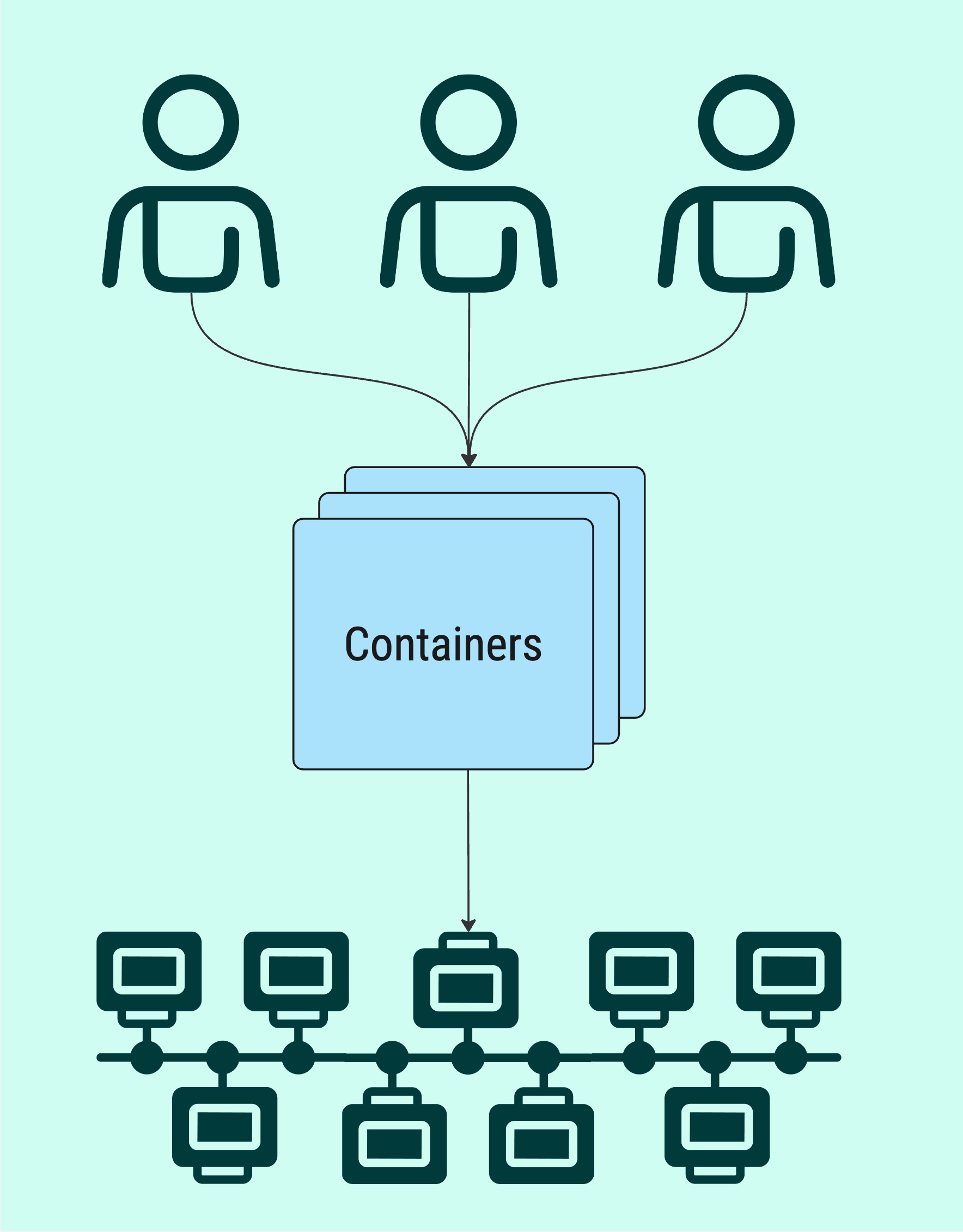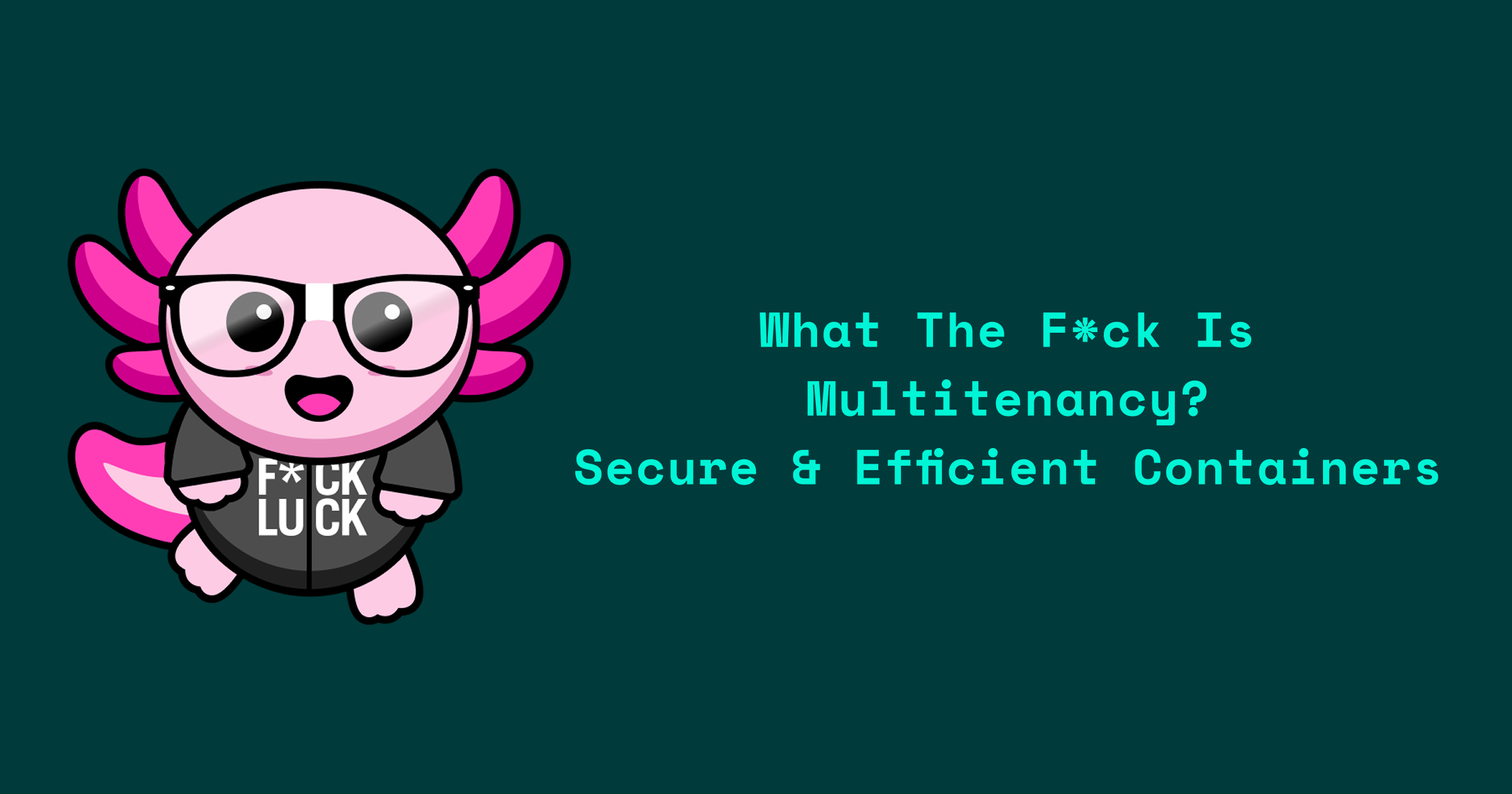What Is Multitenancy? Secure & Efficient Containers Explained
This blog is a part of our “WTF is...?” series that cuts through the noise to explain complex and trending topics in plain English. We break down the jargon, skip the fluff, and give you the essential knowledge you need to understand what’s what. Whether it's emerging technology, industry buzzwords, or confusing concepts, we strive to make it accessible.
What the f*ck is multitenancy, and why should you care? If you've ever wondered what actually happens when you run a container in the cloud – or why your cloud bill keeps climbing – then this post is for you. By the end, you'll have a clear, no-BS understanding of what multitenancy is, why it matters, and how it shapes the way we build secure, efficient systems today.
What Is Multitenancy?
In plain English: Multitenancy is when multiple organizations or users run their applications on the same physical machine.
Think of it like a WeWork – a shared office space where multiple companies work under the same roof:
Your private office = your application and its unique data
The shared building infrastructure = the operating system, CPU, memory, and other computing resources
Other companies in the WeWork = other users' applications running on the same machine
The building itself = the physical server hardware
Just like WeWork, this arrangement is far cheaper and more efficient than every company leasing their own building. One landlord maintains the elevators, HVAC, Wi-Fi, and conference rooms that everyone shares.
But here's the catch: in most multitenant setups, all companies share the same security badge system and keycard access. If one company's employee figures out how to clone a keycard or bypass the badge reader, they could potentially walk into any office in the building – including yours, where your confidential data is stored.
Why Multitenancy Matters for Modern Cloud Systems
Multitenancy isn’t just technical trivia – it exists to solve a real problem: expensive compute resources.
For platform teams and businesses, multitenancy delivers:
Reduced cloud costs: Run 10 applications on one server instead of 10 separate servers (like 10 startups sharing a WeWork instead of each leasing their own building)
Improved efficiency: Scale applications up or down based on actual usage, not worst-case scenarios (like renting more desks when you hire, fewer when you downsize)
Faster updates: Deploy changes to shared resources once, and all tenants benefit immediately (like when WeWork upgrades the Wi-Fi—everyone gets faster internet without individual IT work)
How Multitenancy Works in Containers (Simple Breakdown)
At a high level, here's how multitenancy works in practice:
- Package your application as a container – Bundle your code and dependencies into a portable unit
- Set up shared resources – Configure the application layer, database, or services that multiple users can access
- Deploy separate instances per tenant – Each user gets their own container with unique data that stays isolated from others
That's it – no jargon, just the basics of how cloud platforms run thousands of applications without needing thousands of physical servers.

The Security Problem (And the Edera Solution)
Here's where things get tricky. Remember that WeWork? The shared infrastructure creates vulnerabilities.
In traditional container-based multitenancy, all tenants share the same operating system kernel. It's like every company in the WeWork using the same keycard access system – if someone at the fintech startup on the third floor discovers a flaw in the card reader, they could potentially clone a keycard and walk into the healthcare company's office on the second floor, accessing sensitive patient data.
This isn't theoretical. Container escapes happen when an attacker breaks out of their container and gains access to the underlying operating system – and therefore, every other container running on that system. It's the shared keycard problem: one vulnerability in the access system puts everyone at risk.
This is where Edera changes the game.
Instead of forcing you to choose between efficiency and security, Edera enables secure multitenancy through microkernel virtual machines. Each tenant gets their own isolated environment – no shared operating system, no shared vulnerabilities – while maintaining the efficiency that makes multitenancy attractive in the first place.
Think of it as upgrading from a WeWork with one shared keycard system to a building where each company has their own completely separate security infrastructure. The fintech startup uses biometric scanners with their own isolated system, the healthcare company uses encrypted mobile access on a different network, the design agency uses PIN codes on standalone hardware – and a breach in one system can't possibly affect the others. You still get all the cost benefits of sharing the building, elevators, and utilities, but your security is truly isolated.
Multitenancy Myths and Realities
A few things people usually get wrong about multitenancy:
Myth: Containers are secure enough – they prevent tenants from accessing each other's data
Reality: Containers are an abstraction, not a security boundary. The shared operating system and resources between containers, even when they have separate namespaces, means that without a virtual machine engine underneath the container engine, containers will be susceptible to container escapes and other data leaks.
Myth: Multitenancy prevents application customizability
Reality: Despite the application being shared between users, there are lots of opportunities to customize the application for each user through configurable workflows, user interfaces, and APIs.
Myth: Virtual machines are too slow for efficient multitenancy
Reality: Optimized virtual machines with microkernels and smart resource usage can match or even outperform Docker by many performance metrics. This means that you can use virtual machines for multitenancy to gain security without the loss of performance.
WTF Takeaway: Secure Multitenancy Without Tradeoffs
At the end of the day, multitenancy is about using expensive compute resources more efficiently so many users can share the same infrastructure without breaking the bank.
The challenge has always been doing this securely. Traditional approaches force you to choose: cheap and risky (containers with shared OS) or secure and expensive (dedicated servers for everyone).
Edera eliminates that tradeoff. By combining multitenancy with microkernel virtual machines, you get the cost efficiency of shared infrastructure with the security of true isolation – no shared operating system, no shared vulnerabilities, no compromises.
If someone asks you tomorrow, you'll be able to say: "Multitenancy is how we run multiple customers on the same infrastructure to save money – and with Edera, we do it without compromising security."
FAQs
What is multitenancy in simple terms?
Multitenancy is sharing infrastructure amongst multiple users or organizations.
Why is multitenancy important for containers?
It lets you run more copies of your container in an efficient way.
Does Edera use multitenancy?
Yes. Edera enables secure multitenancy through a microkernel hypervisor that prevents data sharing between multiple copies of your application.
Read the full “WTF is...?” series

-3.png)